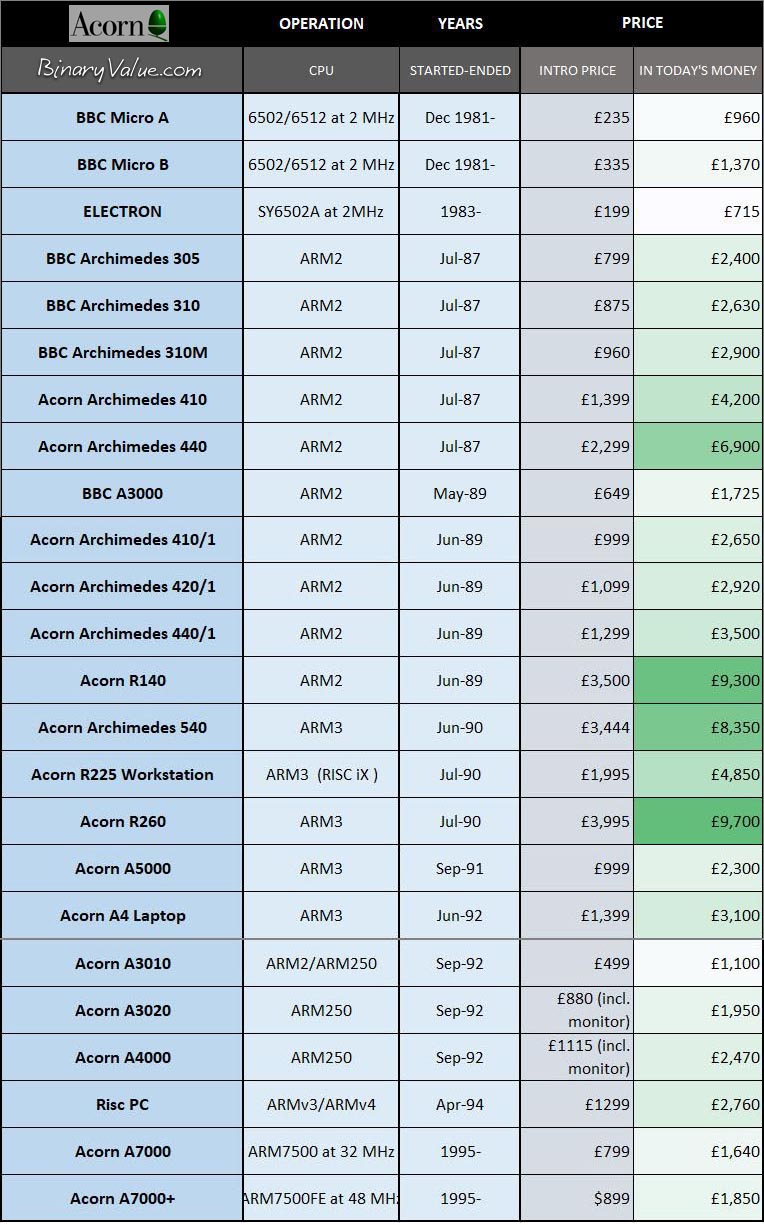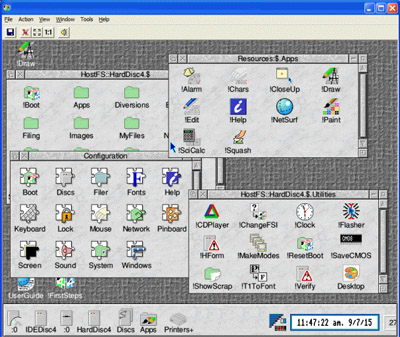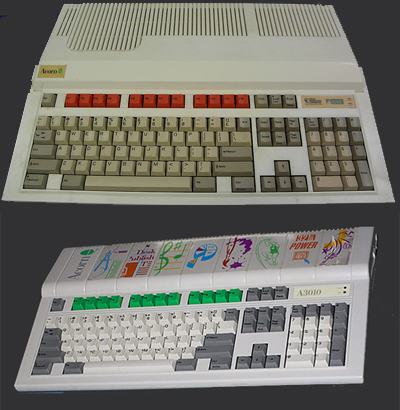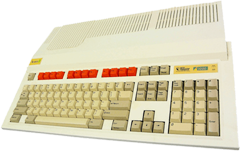"ARMed with Speed": The Acorn Archimedes Legacy

Released in June 1987, the Acorn Archimedes was a groundbreaking line of educational computers developed by Acorn Computers. Manufactured until the mid-1990s, these machines were among the first to use the revolutionary 32-bit ARM RISC architecture and the RISC OS, featuring a multitasking, mouse-driven graphical user interface.
Key Features:
-
32-bit ARM RISC architecture
-
GUI with cooperative multitasking
-
Primarily sold in the UK educational market
The British Educational Market and Acorn Computers
Since the early 1980s, Acorn had been a major supplier to UK schools, especially with the success of the BBC Micro. This stronghold in the educational sector directly influenced the development and adoption of the Archimedes line. While prohibitively expensive for most consumers, schools and universities provided a reliable revenue stream, allowing Acorn to offset the high production costs. Although most sales were in the UK, Archimedes also found limited success in Germany and other parts of Europe.
 Acorn Sales Figures
Acorn Sales Figures
Table: Acorn Computers & Sales (Prices adjusted to inflation -2023)

 Operating System: RISC OS
Operating System: RISC OS

The earliest Archimedes computers shipped with the Arthur OS, later replaced by RISC OS 2 in 1989. RISC OS offered cooperative multitasking, a task manager, and a highly usable GUI. By 1991, RISC OS 3 introduced keyboard shortcuts and other enhancements.
Notable Features:
-
Cooperative multitasking and task manager
-
Flexible file management system
-
GUI in ROM for instant boot
-
No virtual memory support
 Notable Models of the Archimedes Line
Notable Models of the Archimedes Line
□ A300 and A400 Series
The first generation of Archimedes machines included the A305, A310, and A440. These models differed mainly in memory and expansion capabilities. With the ARM2 processor, the A305 rivaled 386-based PCs in performance.
-
ARM2 32-bit CPU
-
A305: 512 KB RAM, A310: 1 MB RAM (expandable to 4 MB)
-
Arthur OS (upgradable to RISC OS 2)
-
256-color display from a 4,096 palette
-
BBC Micro emulation via software
-
8-bit stereo sound, three-button mouse
-
640x512 screen resolution
□ A410/1, A420/1, A440/1 (1989)
Updated versions with RISC OS and enhanced MEMC chips. Officially supported up to 4 MB RAM, but third-party upgrades extended this to 8 MB.
□ BBC Archimedes A3000 (1989)
 Aimed at the home market, the A3000 integrated the motherboard, keyboard, and drive into a single unit, similar to the Atari ST and Commodore Amiga 500. Although still pricey for home users, it was widely adopted by British schools.
Aimed at the home market, the A3000 integrated the motherboard, keyboard, and drive into a single unit, similar to the Atari ST and Commodore Amiga 500. Although still pricey for home users, it was widely adopted by British schools.
-
ARM2 CPU @ 8 MHz
-
RISC OS 2 in 512 KB ROM
-
1 MB RAM (upgradable to 4 MB via third-party)
-
PC and BBC emulation software
-
256-color display, 8-channel stereo sound
-
Internal expansion slot
□ A540 (1990)
A high-end workstation model running RISC iX, Acorn's UNIX variant.
-
ARM3 CPU
-
4 MB RAM (expandable to 16 MB)
-
Fast SCSI
-
Optional Floating Point Accelerator (FPA)
□ A5000 (1991)
Successor to the A400 series with better specs and modern features.
-
ARM3 @ 25 MHz
-
RISC OS 3.0 (later 3.10/3.11)
-
2–4 MB RAM, 40–80 MB hard drive
-
1.6 MB floppy drive
-
1024x768 resolution with 256 colors
-
15-pin VGA connector
□ A4 Laptop (1992)
Acorn's first and only laptop, based on the A5000 design.
-
ARM3 CPU with 6 MHz power-saving mode
-
2 or 4 MB RAM
-
9" greyscale LCD (640x480, 15 shades)
-
Built-in pointing device
-
Priced from £1,399 + VAT
□ Archimedes 3010 & 3020 (1992)
Acorn's second attempt at breaking into the home market. The A3010/3020 included a hard drive, a network interface, a TV modulator, and a joystick port.
-
ARM250 SoC @ 12 MHz
-
2 MB RAM (expandable to 4 MB)
-
RISC OS 3.10/3.11
-
2.5" IDE drive
-
One mini-podule expansion slot
-
TV modulator, joystick ports
-
A3010 launched at £499 + VAT
□ Archimedes 4000 (1992)
A modular version of the 3010/3020, featuring a 3.5" hard drive and expanded IDE.
-
ARM250 @ 12 MHz
-
RISC OS 3.10/3.11
-
105 MB HDD
-
Same expansion slot as 3010/3020
-
Included additional variant: Archimedes 4000s
□ A7000 and A7000+ (1995–1997)
The A7000 resembled the RISC PC in form and function, using an ARM7500 SoC. The latter A7000+ featured a faster ARM7500FE.
-
ARM7500 @ 32 MHz (A7000), ARM7500FE @ 48 MHz (A7000+)
-
4–8 MB RAM (expandable to 128 MB)
-
RISC OS 3.60 to 3.71
-
DE15 VGA port
Legacy of the Archimedes Computers
The Acorn Archimedes remains a landmark in computing history for pioneering the ARM architecture, which continues to dominate the modern computing landscape through smartphones, tablets, and embedded systems.
■ Acorn Archimedes
BinaryValue.com (c)
![]() > FIND MORE
> FIND MORE
□ MODELS
» Commodore Amiga
» Atari ST Series
» Apple Computers
» NeXT
» Xerox Alto
» Archimedes










